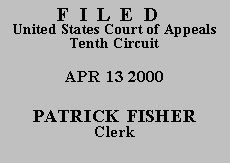

| UNITED STATES OF AMERICA,
vs.
ERIC WILLIAM BLY |
|
Mr. Bly does not argue that the government failed to meet its burden in proving beyond a reasonable doubt that the convictions were his. Rather, he contends that the district court erred in allowing the photographic and fingerprint evidence to be admitted at resentencing because this evidence could have been (but was not) presented at the initial sentencing. Mr. Bly contends that permitting the introduction of new evidence on resentencing "amounts to allowing the government to get two bites at the same apple." Aplt. Br. at 6.
This argument is untenable. Our remand order in this case specifically stated: "'[D]e novo resentencing permits the receipt of any relevant evidence the court could have heard at the first sentencing hearing.'" Green, 175 F.3d at 836 (quoting United States v. Ortiz, 25 F.3d 934, 935 (10th Cir. 1994)). See also United States v. Keifer, 198 F.3d 798, 800-01 (10th Cir. 1999). The district court did not err in following the specific terms of the remand.
AFFIRMED.
Entered for the Court
Paul J. Kelly, Jr.
Circuit Judge
*. This order and judgment is not binding precedent, except under the doctrines of law of the case, res judicata, and collateral estoppel. This court generally disfavors the citation of orders and judgments; nevertheless, an order and judgment may be cited under the terms and conditions of 10th Cir. R. 36.3.
**. After examining the briefs and the appellate record, this three-judge panel has determined unanimously that oral argument would not be of material assistance in the determination of this appeal. See Fed. R. App. P. 34(a); 10th Cir. R. 34.1 (G). The cause is therefore ordered submitted without oral argument.